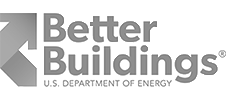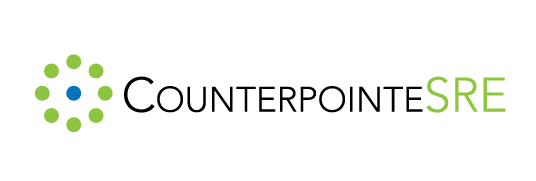Strategies for Multifamily Carbon Emissions Reduction
November 30, 2022
Low Carbon Tech and Finance Series
Office | Large Office | Healthcare | Multifamily
Energy efficiency in multifamily housing presents a significant opportunity to impact returns for both the investor and the community. Besides reducing operating costs, evidence supports green investment ROI increasing from increased rent premiums, increased collateral value, and environmental benefits such as reduce heat island effect. CounterpointeSRE has partnered with the Department of Energy to advocate and finance low carbon strategies listed below. Owners can align their interests with tenants to increase energy equity and benefit their greater community by decreasing the building’s draw on the grid.
Department of Energy Low Carbon Strategies
Lighting
Install LED lighting that meets DesignLights Consortium (DLC) technical requirements. Include integrated daylight and occupancy sensor networked lighting controls that load shed via Auto-DR interface and integrate into BAS. Download the Better Buildings strategy sheet below.
HVAC and Water Heating
Better Buildings Solutions Center recommendations range from the installation of air source heat pump RTUs, dual fuel RTUs, or variable refrigerant flow (VRF) systems to simple measures such as the reduction in water heating demand through the installation of low-flow faucets and showerheads.
Building Controls
Install an EMIS as an integrated platform for monitoring and control of lighting and HVAC systems. Utilize EMIS to control and monitor for demand flexibility.
Building Envelope
Starting with simple EE measures such as cool roof coatings and insulation/air tightening, Better Buildings’ carbon reduction strategies for apartments extend to include the installation of dynamic windows, thin triple windows and/or vacuum glazing. Download the full list below.
Renewables and Battery
Purchase on-site PV to cover roof area (verify roof structure and age) and parking as needed while integrating renewables, battery storage and building loads into demand flexibility controls.
Download the full Low Carbon Technology Strategies guide for mid-rise apartments from the Department of Energy’s Better Buildings initiative here.

C-PACE for Affordable Housing

The developer of this multifamily tapped C-PACE financing to include PV solar, HE snow melting, a green roof, and other efficiency measures in this cooperative development in Traverse City, Michigan.
- The owner sought low-cost financing to support affordable housing goals while building sustainably
- C-PACE from CounterpointeSRE complimented a complicated capital stack that included MEDC grant, USDA backed construction loan, CDFI loan, Brownfield TIF and other tax incentives.
- C-PACE financed measures are expected to save over 1,315 MT CO2e annually with lifetime utility savings of greater than $1.9 million
Additional Multifamily Insights:
- Better Buildings interview with Preservation of Affordable Housing (POAH): “Decarbonization Download: 5 Questions with POAH”
- Building Energy Exchange: “Low Carbon Multifamily Retrofit Playbooks”
First Steps
- Work with professional to identify potential measures that increase efficiency and to generate energy.
- Submit itemized cost of proposed measures and projected utility savings to CounterpointeSRE for cost benefit analysis report and eligiblity review.
- Work with CounterpointeSRE to optimize annual operational cash flows and building performance.
